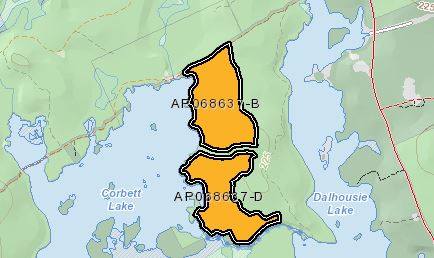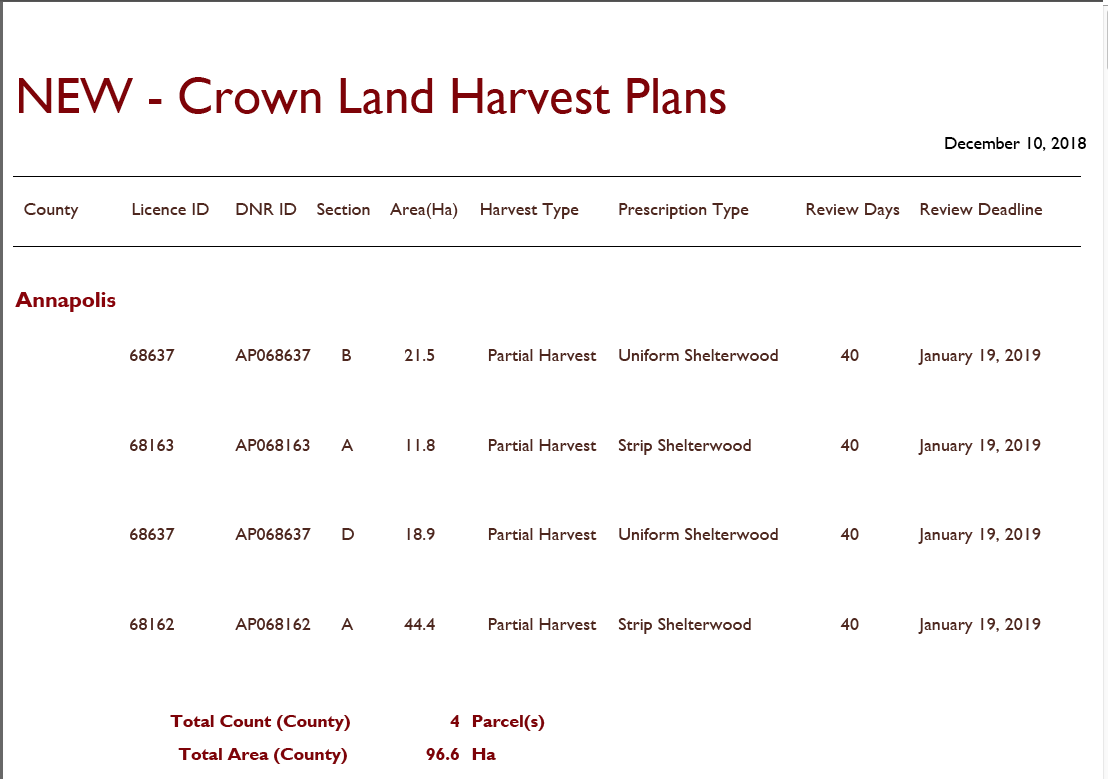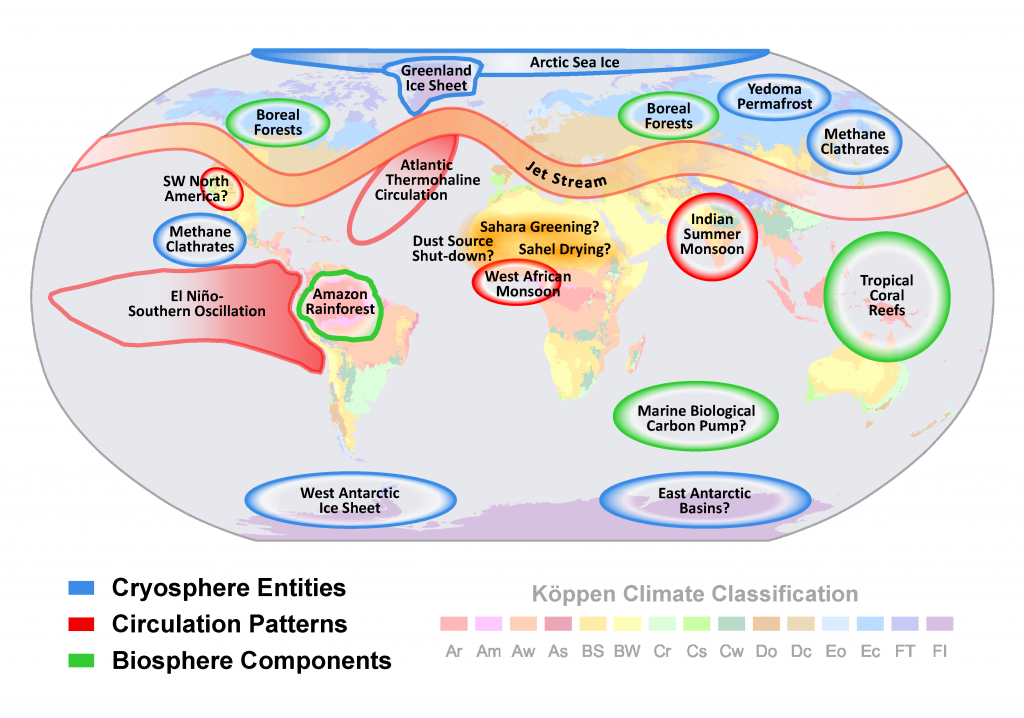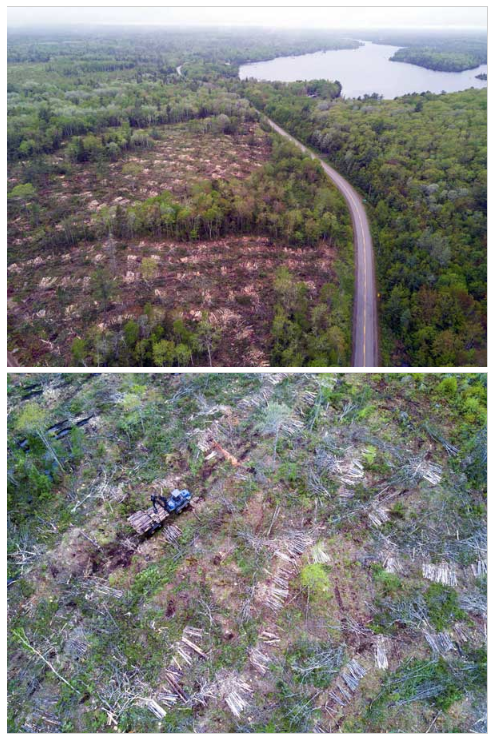Just perhaps, the tide is shifting in Nova Scotia
In yet another case of citizens doing the due diligence that is required now that NS Lands and Forestry procedures for approving Crown land forests for harvest have been discredited but remain in place for at least another year, a group of Annapolis Co folks are investigating harvests proposed for the “Corbett-Dalhousie Lakes parcel”. Earlier, they were successful in getting the proposed harvest on Hardwood Hill nixed.
Social Media, in this case, Annapolis Royal & Area – Environment & Ecology – is playing a key role in highlighting such cuts and mobilizing people to take action, though that is not its primary purpose. The group was formed only on Oct 29 of this year, but is already at 192 members. Reads the About: “This is a group for those in Annapolis Royal, NS, and the surrounding area, who are interested in ecology and the environment. It will be a place for us to network about environmental issues, coming events, and also to share our observations about the natural world in this area.”
I have been impressed with the level of discussion and knowledge of natural history by members of this group which I joined fairly early on. (I am a Haligonian, but have family roots in Annapolis and Kings Counties.)
I think most members of the group would rather spend their time studying and enjoying the natural world in their home territory, as would I, but the threat to that world in the form of clearcutting/even aged management is so large and imminent that they (we) are compelled to fight it. They are taking a very deliberate, step by step approach to such matters, compiling publicly available information about particular areas slated for harvest, doing their own ground-truthing, working through the HPMV/Crown land harvests process and submitting comments (learning the technicalities as they go), and also raising the issues via other venues. They are fortunate that the Annapolis Co. Council has taken a similar approach to clearcutting more broadly in Annapolis Co. which has a large area of Crown land and so is receptive to their concerns. (see Posts of Jun 2, 2017; Jun 23. 2017; Apr 12, 2017, Mar 8, 2017)
Hardly had the ink dried (or the electrons rearranged) on their celebration of the governments decision NOT to proceed with cuts on Hardwood Hill (Post, Dec 17, 2018) when B.W. wrote:
We’ve heard the good news about Hardwood Hill being spared from harvest. Now for the *bad* news. The latest Harvest Plan Map View (HPMV) proposed harvests arrived in my email this afternoon. If you’ve read S.S.’s post below, you’ll already have seen us discussing two tracts of forest that are up for approval. I’m particularly incensed about the tract between Dalhousie and Corbett Lakes as that is right in the middle of one of the Annapolis County canoe routes which is touted as a recreational attraction for our county.

B.W. was alerted to this proposed cut by an e-mail sent to subscribers of the Harvest Plan Map Viewer on Dec 17 informing them that “The Harvest Plan Map Viewer has been updated as of December 10, 2018.” (L&F now allows 40 days for comments; in this case they are due 33 days after the e-mail was sent out, so I guess technically, the Review Deadline stated as Jan 19, 2019 should be extended another 7 days). Here’s the Annapolis part:

Also on the block on this one: Colchester Co. 27 parcels 288 ha; Cumberland Co. 7 parcels 47.5 ha; Guysborough Co. 8 parcels 180 ha; Hants Co. 13 parcels 145.7 ha; Lunenburg Co. 10 parcels 135.6 ha; Queens 8 parcels 77.6 ha; Richmond 5 parcels 78.8 ha; total for province: 82 parcels 1050.8 ha or 1289 CFL football fields (and they wonder where they can put a stadium in Halifax).
Said B.W. on Annapolis Royal & Area – Environment & Ecology
Dec 18 RESEARCH — This afternoon, I looked up the Nova Scotia Forest Map square for the proposed harvest which I will refer to as the Dalhousie-Corbett Lakes harvest. It is off Morse Road, south of Bridgetown. There are 2 parcels on Crown Land between the two lakes. I made a screen grab of that section of the map and roughly coloured it in with yellow highlighting to show the two cuts. I checked the forest codes for the two parcels. The upper parcel is coded HW for Hardwood. The majority of that parcel shows Sugar Maple (SM) as the primary tree species, and Red Maple as the secondary species. The lower parcel is coded SW for Softwood. The primary species is Red Spruce (RS) with Balsam Fir (BF) as the secondary species. It looks like tree height is about 14.5 meters throughout both parcels. If anyone can add to what I’ve described here, based on the map, please feel welcome to comment.
Deadline for comments via the HPMV is January 19th, but I would strongly suggest doing some letter writing. I’ll try to post more information over the next few days. For reference, these are parcels AP068637B (21.5 hectares) and AP068637D (18.9 hectares) on the HPMV website.
This was followed by another post on Dec 23
SHARING — AND — ACTION!! Okay, everyone. This is an article from today’s “Spectator”* — concerning the proposed harvest of the forest between Corbett and Dalhousie Lakes — just off the west side of Morse Road, south of Bridgetown. Please keep informed on this matter. There’s a scan of the canoe route page from the Annapolis County Canoe Routes book and also a map of the area posted with the newspaper article. A few of us are hoping to do some reconnaissance over the holiday…
“An article from today’s “Spectator”” refers to a photo of a clipping “Planned Crown Land Harvest raises concerns” by Lawrence Powell The Spectator, published in the Chronicle Herald print ed, Dec 22, 2018. The same article was published under a different title in The Spectator Dec 23, 2018 as Council Concerned – Province puts two more parcels of Annapolis County Crown forest on harvest plans map (available online without subscription).
From the article:
WEST-DALHOUSIE, N.S. – Some residents in Annapolis County are concerned about another planned forest harvest on Crown land, this time two large parcels near the Morse Road between Bridgetown and West Dalhousie.
Municipal council may call a special meeting over the holidays to talk about what’s happening up on the mountain. A local homeowner said the mountain is already being raped, roads are being ruined, and wildlife displaced.
… “I think it’s imperative Annapolis County take an active roll in this and we will be jointly preparing some sort of correspondence to go to the province to state our position,” said Habinski.
…Randall Fredericks, who with Wigney and others helped change the province’s mind on a 20-hectare harvest on nearby Hardwood Hill, might be one of those people heading out to Dalhousie Lake over the holidays.
“We’re actually hoping to head out that way next week, pending weather and everyone being able to make it out,” he said Dec. 18 in an interview. He was trying to find out the road conditions to get into the sites. “There are a few concerned locals in the area as well.”
He said people are concerned about possible flooding issues as a result of the forest harvesting. “There’s been a lot of cutting on both private and Crown land in that area and Dalhousie in general.”
And he’s concerned about historic Bloody Creek at the bottom of the mountain, an historic site with many artifacts, and farm fields below that on the valley floor.
Dalhousie Lake was formed when Bloody Creek was dammed. And the county’s canoe routes book notes that within the Dalhousie Lake reservoir is possibly a meteor impact crater measuring about 400 metres across.
Wigney said rural people value public lands in ways that urban people may not understand.
“They have many outdoor venues – bicycle paths, public swimming pools, hockey arenas, tennis courts, dog parks, the trail system in HRM, etc…,” she said. “We don’t actually have that many public outdoor places out here. It looks like there is, but a lot of it is private land. If we turn our few Crown land forests into torn-up, muddy, rutted messes covered in slash, that won’t leave us with many outdoor places.”
She said that’s unfair to residents.
“And it’s also very unfair to the wildlife. When a forest is destroyed, we lose it for at least two or three human generations,” she said. “Clear cutting of a forest is a serious matter and not something that should be decided by a handful of people in a short space of time.”
The involvement and active support of Annapolis Co. Council is significant. The letter the Council wrote to Premier McNeil (their MLA) in the spring of 2017 requesting the county be excluded from WestFor harvests likely played a key role in the Premier’s decision to call for an Independent Review.
So… we can expect that opposition to the proposed harvests of the “Corbett-Dalhousie Lakes parcel” will be given significant attention by government/L&F.
I have chronicled some of this effort because I think it illustrates a new turn in debates about forestry in NS, namely the involvement of social media (with a wide range of people including woods workers and even L&F Minister Iain Rankin joining the discussions), and the increasing sophistication of those involved as they educate themselves on the issues and procedures (as did the Annapolis County Council) and begin to speak to L&F in L&F’s technical language, as well as to pursue political and PR routes to express their concerns.
This provides some hope going into 2019, that the tide will shift even more. It could hardly be too soon. While I am encouraged by what’s happening with the involvement of the Annapolis Co. folks, we have to ask… what about the even more remote areas where there may not be the critical mass of volunteers to do such follow-up of Crown land harvest announcements?
It’s a bit of an irony, is it not, that the most remote, thinly populated areas – potentially the best areas for wildlife because of the sparsity of settlement – are probably most under threat. That’s made possible by the incredible “efficiency” of Industrial Forestry (i.e. it’s dependent on as few people as possible) and the relative lack of human eyes on the landscape. However, we do have Danny George!
I guess I am searching for positive things about our natural world to celebrate as 2018 comes to a close. It’s been a year in which human destruction of that world continued pretty well unabated locally and globally and we witnessed the massive wildfires, and intense storms likely attributable to our collective inability to rein in our bad habits even while the predictions of the consequences of not doing so became firmer and more alarming*.
The successes of local groups such as the Annapolis folks and the Ingram River Wilderness folks on the south shore and Danny George in eastern Nova Scotia in stopping even a small fraction of the destructive forestry practices in NS are certainly amongst the positive things to celebrate. We have to be encouraged also by other groups that have yet to see a victory but remain undaunted in their efforts, also by the appearance of more such groups.
Just perhaps, the tide is shifting in Nova Scotia.
For a little Yuletide cheer, view Yule Tree Gathering by Cliff Seruntine
——————-
* View Trajectories of the Earth System in the Anthropocene
Will Steffen et al., 2018 PNAS August 14, 2018 115 (33) 8252-8259
We explore the risk that self-reinforcing feedbacks could push the Earth System toward a planetary threshold that, if crossed, could prevent stabilization of the climate at intermediate temperature rises and cause continued warming on a “Hothouse Earth” pathway even as human emissions are reduced. Crossing the threshold would lead to a much higher global average temperature than any interglacial in the past 1.2 million years and to sea levels significantly higher than at any time in the Holocene. We examine the evidence that such a threshold might exist and where it might be. If the threshold is crossed, the resulting trajectory would likely cause serious disruptions to ecosystems, society, and economies. Collective human action is required to steer the Earth System away from a potential threshold and stabilize it in a habitable interglacial-like state. Such action entails stewardship of the entire Earth System—biosphere, climate, and societies—and could include decarbonization of the global economy, enhancement of biosphere carbon sinks, behavioral changes, technological innovations, new governance arrangements, and transformed social values.
 Map of the most important tipping elements in the Earth System overlain on the Köppen climate classification. There are three groups of tipping elements: melting ice bodies, changing circulations of the ocean and atmosphere, and threatened large-scale ecosystems. Question marks indicate systems whose status as tipping elements is particularly uncertain. SOURCE: www.pik-potsdam.de Map of the most important tipping elements in the Earth System overlain on the Köppen climate classification. There are three groups of tipping elements: melting ice bodies, changing circulations of the ocean and atmosphere, and threatened large-scale ecosystems. Question marks indicate systems whose status as tipping elements is particularly uncertain. SOURCE: www.pik-potsdam.de |

